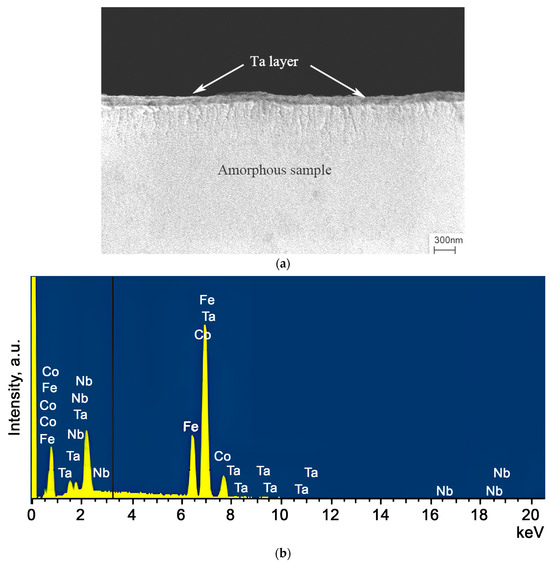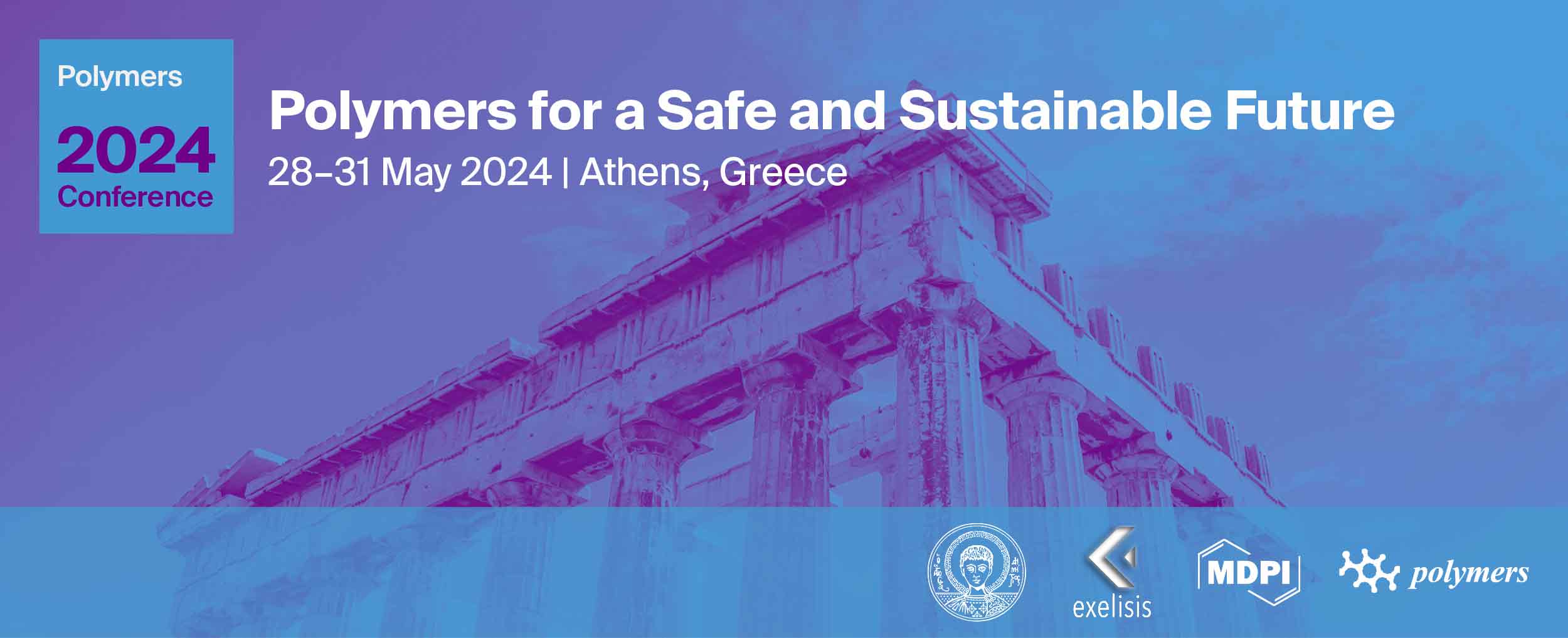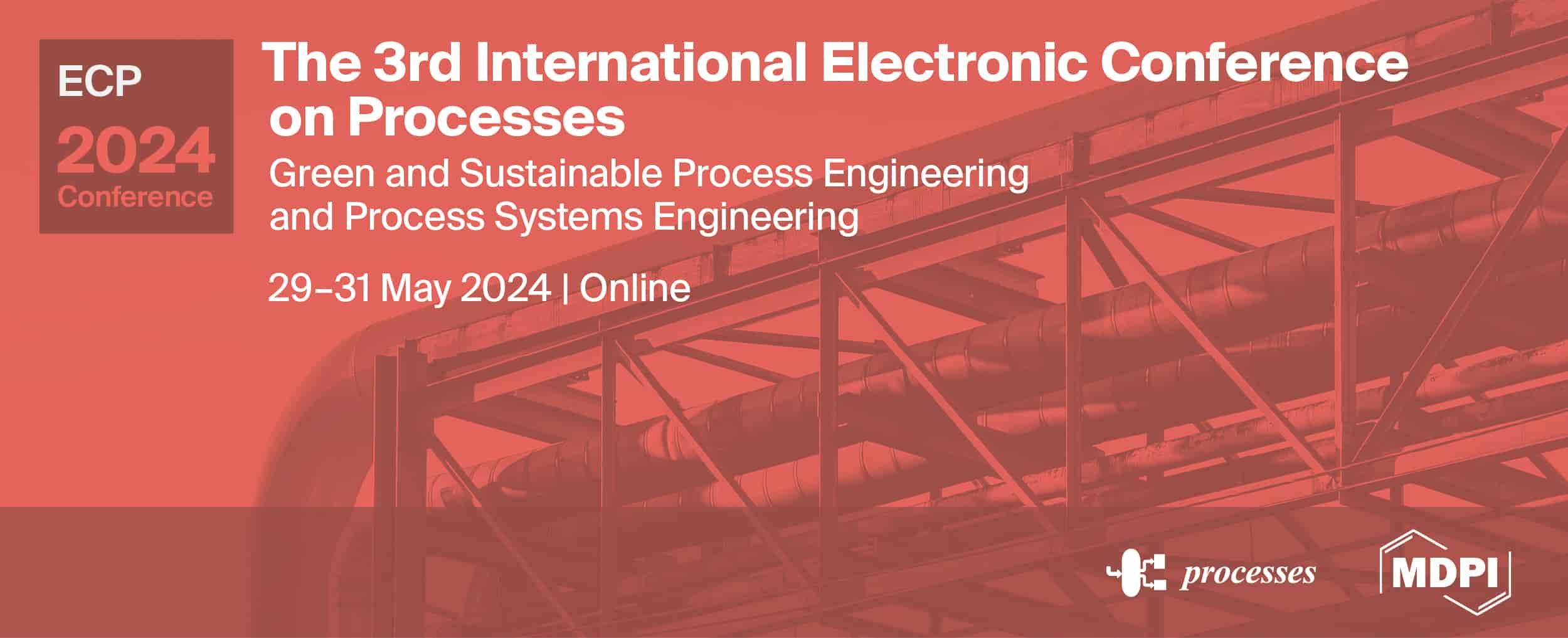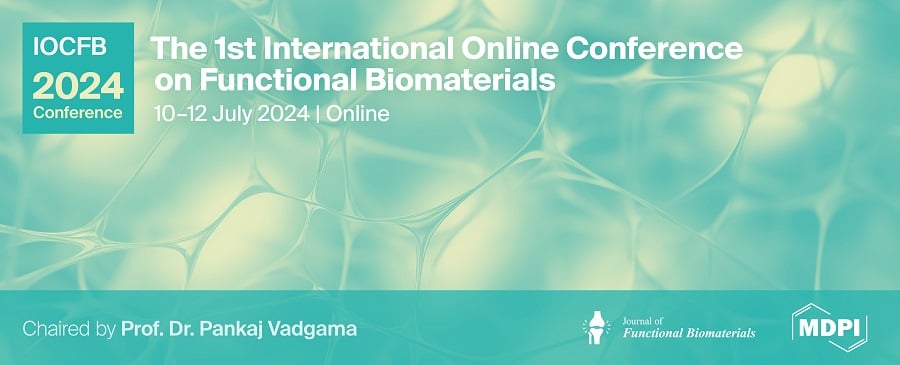-
 Using an Al-Incorporated Deep Black Pigment Coating to Enhance the Solar Absorptance of Iron Oxide-Rich Particles
Using an Al-Incorporated Deep Black Pigment Coating to Enhance the Solar Absorptance of Iron Oxide-Rich Particles -
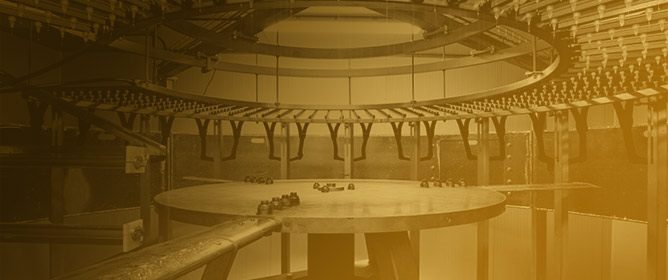 Development of Test Methods to Evaluate the Rain Erosion Resistance of Leading Edge Protection Coatings
Development of Test Methods to Evaluate the Rain Erosion Resistance of Leading Edge Protection Coatings -
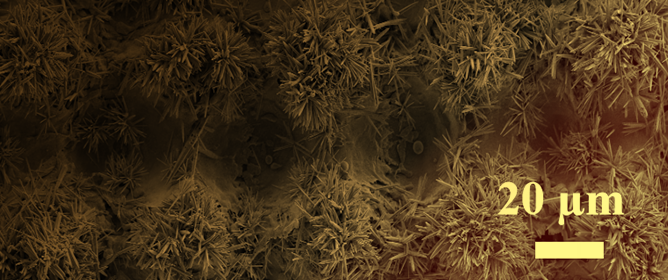 Fabrication of Piezoelectric ZnO Nanowires on Laser Textured Copper Substrate to Enhance Catalytic Properties
Fabrication of Piezoelectric ZnO Nanowires on Laser Textured Copper Substrate to Enhance Catalytic Properties
Journal Description
Coatings
Coatings
is an international, peer-reviewed, open access journal on coatings and surface engineering published monthly online by MDPI. The Korean Tribology Society (KTS) is affiliated with Coatings and its members receive discounts on the article processing charges.
- Open Access— free for readers, with article processing charges (APC) paid by authors or their institutions.
- High Visibility: indexed within Scopus, SCIE (Web of Science), Inspec, CAPlus / SciFinder, and other databases.
- Journal Rank: JCR - Q2 (Materials Science, Coatings & Films) / CiteScore - Q2 (Surfaces and Interfaces)
- Rapid Publication: manuscripts are peer-reviewed and a first decision is provided to authors approximately 13.8 days after submission; acceptance to publication is undertaken in 2.8 days (median values for papers published in this journal in the second half of 2023).
- Recognition of Reviewers: reviewers who provide timely, thorough peer-review reports receive vouchers entitling them to a discount on the APC of their next publication in any MDPI journal, in appreciation of the work done.
- Sections: published in 15 topical sections.
- Testimonials: See what our editors and authors say about Coatings.
Impact Factor:
3.4 (2022);
5-Year Impact Factor:
3.4 (2022)
Latest Articles
The Effect of a Coating on the Crystallization of Multicomponent Co-Based Amorphous Alloys
Coatings 2024, 14(1), 116; https://doi.org/10.3390/coatings14010116 - 15 Jan 2024
Abstract
The effect of protective coatings on the crystallization of amorphous Co-based alloys was studied using the methods of X-ray diffraction, differential scanning calorimetry, and transmission electron microscopy. The crystallization of the amorphous alloys was studied on as-prepared samples, deformed samples, and deformed samples
[...] Read more.
The effect of protective coatings on the crystallization of amorphous Co-based alloys was studied using the methods of X-ray diffraction, differential scanning calorimetry, and transmission electron microscopy. The crystallization of the amorphous alloys was studied on as-prepared samples, deformed samples, and deformed samples with a protective coating. After heat treatment, the fraction of the crystalline phase in the pre-deformed samples was higher than in the undeformed samples. When using a protective coating, the fraction of nanocrystals formed during heat treatment increased. The size of the crystals formed in deformed samples was smaller, and in the deformed samples with a protective coating, they were slightly larger than in the corresponding initial samples. The reasons for the differences in the formed structure in the amorphous alloys under study are discussed in terms of free volume.
Full article
(This article belongs to the Special Issue Advances in Surface Engineering of Metals and Alloys)
►
Show Figures
Open AccessArticle
PVTF Nanoparticles/PLA Electroactive Degradable Membrane for Bone Tissue Regeneration
Coatings 2024, 14(1), 115; https://doi.org/10.3390/coatings14010115 - 15 Jan 2024
Abstract
Electroactive biomaterials can influence the microenvironment between cells and a material’s surface by controlling surface electrical signals, thereby affecting cellular physiological activities. As the most commonly used ferroelectric polymer, Poly(vinylidene fluoride-trifluoroethylene) (PVTF) has attracted widespread attention due to its good stability, biocompatibility and
[...] Read more.
Electroactive biomaterials can influence the microenvironment between cells and a material’s surface by controlling surface electrical signals, thereby affecting cellular physiological activities. As the most commonly used ferroelectric polymer, Poly(vinylidene fluoride-trifluoroethylene) (PVTF) has attracted widespread attention due to its good stability, biocompatibility and mechanical properties. However, it has limitations such as non-degradability. In this study, PVTF nanoparticles (PVTF NPs), prepared using a phase separation method, were compounded with polylactide (PLA) to prepare PVTF NPs/PLA composite membrane (PN/PLA), which simultaneously achieved electroactivity and degradability. PVTF NPs containing ferroelectric β phase were evenly distributed on the PLA substrate, forming negative potential spots through corona polarization. The PLA substrate gradually degraded in a simulated body fluid environment. The negative surface potential provided by PVTF NPs in PN/PLA enhanced the adhesion, proliferation, and early-stage osteogenic differentiation of bone marrow mesenchymal stem cells (BMSCs). The electrical bioactivity and degradability could be joined together in this study, which is promising for tissue regeneration biomaterials, such as guided bone regeneration membrane.
Full article
(This article belongs to the Collection Feature Paper Collection in Bioactive Coatings and Biointerfaces)
►▼
Show Figures
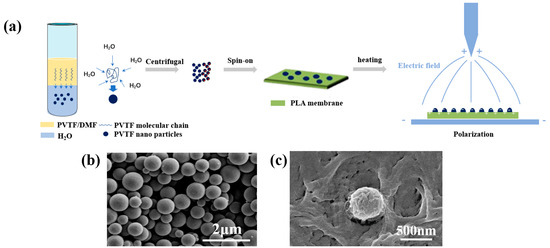
Figure 1
Open AccessArticle
The Effect of Laser-Cladded Co6, T400, and Ni-Based 30WC Coatings on the Wear Resistance of H13 Steel
Coatings 2024, 14(1), 114; https://doi.org/10.3390/coatings14010114 - 15 Jan 2024
Abstract
To enhance the wear resistance of H13 steel (4Cr5MoSiV1), Co6, T400, and Ni-based 30WC coatings were applied to the surface of H13 steel using laser cladding technology. The microstructures and phase compositions of the three coating types were analyzed using SEM and XRD
[...] Read more.
To enhance the wear resistance of H13 steel (4Cr5MoSiV1), Co6, T400, and Ni-based 30WC coatings were applied to the surface of H13 steel using laser cladding technology. The microstructures and phase compositions of the three coating types were analyzed using SEM and XRD methods. The high-temperature friction and wear performance of the three coated samples and H13 steel were measured through high-temperature friction wear tests, and the friction wear types of the four samples were analyzed. A comparative analysis of experimental data led to the following conclusions: (1) Among the four samples, the Ni-based 30WC-coated sample exhibited the best self-lubricating properties. (2) The average wear area of H13 steel was 0.059 mm2, and the wear volume was 0.29 mm3; the average wear area of Co6-coated samples was 0.050 mm2, and the wear volume was 0.25 mm3; the average wear area of T400-coated samples was 0.002 mm2, and the wear volume was 0.01 mm3; and the average wear area of the Ni-based 30WC-coated sample was 0.035 mm2, and the wear volume was 0.17 mm3. In terms of wear resistance, the ranking from highest to lowest was: T400-coated sample > Ni-based 30WC-coated sample > Co6-coated sample > H13 steel. (3) Based on the classification of friction wear types, H13 steel primarily exhibited adhesive wear and oxidized wear; the Co6- and T400-coated samples primarily showed adhesive wear, abrasive wear and oxidized wear; and the Ni-based 30WC-coated sample mainly exhibited abrasive wear and oxidized wear.
Full article
(This article belongs to the Special Issue Corrosion Resistance, Mechanical Properties and Characterization of Metallic Materials and Coatings)
►▼
Show Figures

Figure 1
Open AccessArticle
Influence of Axle Weight and Frequency on the Tribological Properties of Laser-Repaired 316L Stainless Steel Coatings in Railway Wheel Tread Braking
Coatings 2024, 14(1), 113; https://doi.org/10.3390/coatings14010113 - 15 Jan 2024
Abstract
►▼
Show Figures
The impact of the complex braking environment on the service performance of the repair fusion cladding was studied, which is of great significance to improve the ability of the train wheel track system to resist the extremely harsh environment. In this paper, a
[...] Read more.
The impact of the complex braking environment on the service performance of the repair fusion cladding was studied, which is of great significance to improve the ability of the train wheel track system to resist the extremely harsh environment. In this paper, a 316L stainless steel coating was prepared using laser fusion cladding repair technology for the local damage location of the train wheel tread. The MS-HT1000 high-temperature wear tester was used for the experiment. Then, the influence of different braking conditions on the friction and wear performance of the repaired specimens at room temperature and high temperature was analyzed. The results showed that the microstructure of the laser-repaired 316L stainless steel coating was dendritic and eutectic, and its physical phase was mainly composed of austenite, Fe-Cr, and carbides. The wear rate increases with the rise in the shaft weight load, indicating that the higher the contact load, the more severe the wear. In contrast, the influence of the friction coefficient in a room temperature environment is less variable. With an increase in the braking frequency, the wear of the specimen firstly rises and then decreases, and when the frequency is 1 Hz, the value of the wear rate at room temperature is the largest, and the wear surface appears as more peeling layers, and a large amount of wear debris is randomly distributed, which manifests as the wear mechanism being characterized by abrasive wear and adhesive wear. Therefore, different factors affect the wear level of the material differently, with the axle weight load having the greatest influence. The relevant results help to provide corresponding theoretical references for the optimization of parameters under the braking condition of the wheel tread, which ensures the normal operation of the braking system when driving.
Full article
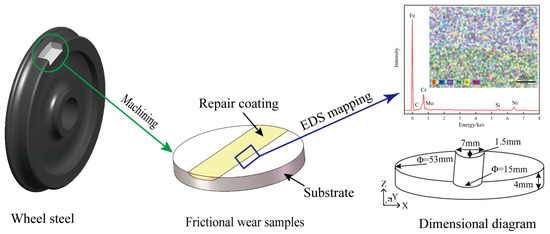
Figure 1
Open AccessArticle
The Design and Preparation of Permittivity-Adjustable FeNi@SrFe-MOF Composite Powders
Coatings 2024, 14(1), 112; https://doi.org/10.3390/coatings14010112 - 15 Jan 2024
Abstract
When the thickness of the wave-absorbing material is low, there exists the problem of the narrow wave-absorbing frequency band, making it difficult to regulate the position of the wave-absorbing peak. In this study, FeNi@SrFe-MOF composite powders were synthesized using a hydrothermal method and
[...] Read more.
When the thickness of the wave-absorbing material is low, there exists the problem of the narrow wave-absorbing frequency band, making it difficult to regulate the position of the wave-absorbing peak. In this study, FeNi@SrFe-MOF composite powders were synthesized using a hydrothermal method and a liquid-phase reduction method. The composite powder was spherical, with a particle size of about 50 μm–60 μm; the core layers of the powders were porous SrFe-MOF powders with permanent magnetization, and the outer layers were FeNi alloy nano-powder coatings with a particle size of 100 nm–120 nm, which took into account both the soft magnetization and the permanent magnetization properties of the composite powders. Additionally, a directional magnetic field was applied to the powder coating. By regulating the intensity and direction of the magnetic field, the electromagnetic parameters of the composite powder coating underwent sensitive changes, allowing for the precise regulation of the electromagnetic wave absorption performance of the composite powders. With the increase in magnetic field intensity, the ε′ value decreased significantly. The ε′ values were 8.56–7.35 for H453mT and 6.73–6.12 for H472mT. When no magnetic field was applied, the Snoke limit frequency of the μ′ value was 6.0 GHz. When the magnetic field intensity increased, the Snoke limit frequency of the μ′ value increased from 6.0 GHz, without the magnetic field, to 8.3 GHz; the Snoke limit of the composite powders was shattered. After the H453mT magnetic field regulation treatment, the powder coating exhibited good impedance matching characteristics with air. When the magnetic field intensity was 453mT and the thickness of the composite powders coating was 3.5 mm, the composite powders coating showed the strongest absorption peak when the R-value was −59 dB at 7.8 GHz, and the effective absorption bandwidth reached 3.2 GHz, exhibiting superb absorbent qualities. The wave absorption property of the coating can be sensitively changed by the magnetic field regulation treatment at the condition without changing the powder structure or coating structure, which provides a new strategy for the regulation of the wave absorption property and has broad application prospects.
Full article
(This article belongs to the Section Surface Engineering for Energy Harvesting, Conversion, and Storage)
►▼
Show Figures
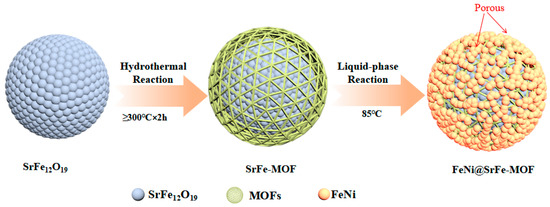
Figure 1
Open AccessArticle
Fabrication and Characterization of LaF3-Reinforced Porous HA/Ti Scaffolds
by
and
Coatings 2024, 14(1), 111; https://doi.org/10.3390/coatings14010111 - 15 Jan 2024
Abstract
To improve the performance of porous hydroxyapatite/titanium (HA/Ti) composites, LaF3 reinforced porous HA/Ti scaffolds with a porosity of approximately 60% were prepared via a powder metallurgical method, using NH4HCO3 as the pore-forming agent. The scaffolds induced HA formation and
[...] Read more.
To improve the performance of porous hydroxyapatite/titanium (HA/Ti) composites, LaF3 reinforced porous HA/Ti scaffolds with a porosity of approximately 60% were prepared via a powder metallurgical method, using NH4HCO3 as the pore-forming agent. The scaffolds induced HA formation and showed high bioactivity, and the compressive strength could be regulated by changing the LaF3 dosage. When the LaF3 dosage was 0.3%, the compressive strength of the porous scaffold was 65 MPa. Moreover, LaF3 reinforced porous HA/Ti scaffolds can further induce the deposition of calcium phosphate after immersion in simulated body fluid (SBF) for 7 days, indicating that the corresponding scaffold is an ideal choice for spongy bone repair.
Full article
(This article belongs to the Special Issue Advanced Alloy Degradation and Implants)
►▼
Show Figures

Figure 1
Open AccessArticle
The Effect of Laser Shock Peening (LSP) on the Surface Roughness and Fatigue Behavior of Additively Manufactured Ti-6Al-4V Alloy
Coatings 2024, 14(1), 110; https://doi.org/10.3390/coatings14010110 - 15 Jan 2024
Abstract
Laser shock peening (LSP) uses plasma shock waves to induce compressive residual stress at the surface of a component which has the potential to improve its fatigue properties. For AM parts, the existence of internal defects, surface roughness, and tensile residual stresses leads
[...] Read more.
Laser shock peening (LSP) uses plasma shock waves to induce compressive residual stress at the surface of a component which has the potential to improve its fatigue properties. For AM parts, the existence of internal defects, surface roughness, and tensile residual stresses leads to noticeably lower fatigue strength compared to materials produced through conventional processes. Furthermore, there is a tendency for greater scatter in the fatigue behavior of these parts when compared to traditionally manufactured components. In this study, the effect of LSP on the roughness and fatigue behavior of Ti-6Al-4V alloy constructed through Laser Powder Bed Fusion (L-PBF) technique was investigated. Two types of samples were designed and tested: as-built surface air foil samples for four-point bending tests and machined surface straight gage samples for uniaxial fatigue testing. Two sets of process parameters, optimized and non-optimized, were also used for the fabrication of each sample type. It was found that LSP had negative effects on the smooth (i.e., machined) surface samples, whereas for as-built surfaces the roughness was enhanced by decreasing the sharpness of the deep valleys and partially remelting the loosely bonded particles on the peaks. It was found that the scatter of the fatigue data decreased for optimized machined samples, while no clear improvement was observed in their lives. However, all non-optimized samples showed improvements in fatigue lives after the LSP process.
Full article
(This article belongs to the Special Issue Surface Engineering Treatments and Innovative Coatings for Additive Manufacturing Materials)
►▼
Show Figures
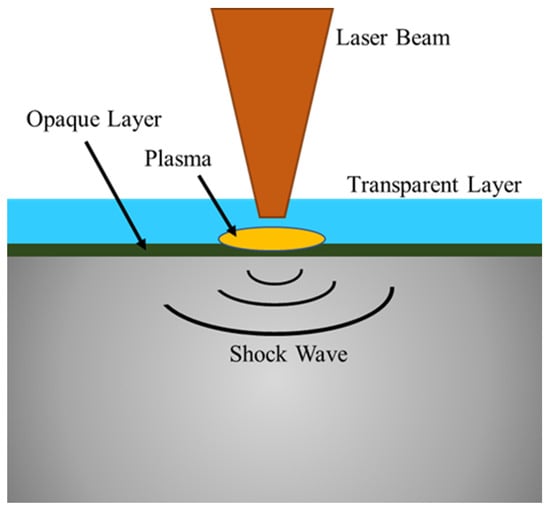
Figure 1
Open AccessArticle
High-Temperature Heat Treatment of Plasma Sprayed Ti–Si–C–Mo Coatings
Coatings 2024, 14(1), 109; https://doi.org/10.3390/coatings14010109 - 15 Jan 2024
Abstract
In this work, the effect of 800 °C and 1100 °C post-heat treatment on the plasma spraying of Ti–Si–C–xMo (x = 1.0, 1.5) composite coatings was investigated. The composite coatings were composed of TiC, Ti3SiC2, Ti5Si3
[...] Read more.
In this work, the effect of 800 °C and 1100 °C post-heat treatment on the plasma spraying of Ti–Si–C–xMo (x = 1.0, 1.5) composite coatings was investigated. The composite coatings were composed of TiC, Ti3SiC2, Ti5Si3 and Mo5Si3 reacted phases. After heat treatment, the Ti3SiC2 and Mo5Si3 phases increased. The coating microhardness decreased by 16% and 18% for Ti–Si–C–1.0Mo and Ti–Si–C–1.5Mo coatings, respectively, after heat treatment at 1100 °C. Fracture toughness increased by 16% for the Ti–Si–C–1.5Mo coating after heat treatment at 1100 °C, which was mainly due to the heat treatment promoting Ti3SiC2 formation, healing micro-cracks, reducing the internal stress and making the microstructure dense. The coating friction coefficient before and after heat -treatment was between 0.4 and 0.6. After heat treatment, the wear amount of the coating was first reduced and then increased, and the minimum wear loss occurred after heat treatment at 800 °C. The wear mechanism was mixed abrasive wear, adhesive wear and tribo-oxidation wear.
Full article
(This article belongs to the Special Issue Advanced Materials and Surface Protection)
►▼
Show Figures

Figure 1
Open AccessArticle
Investigation of Impact of C/Si Ratio on the Friction and Wear Behavior of Si/SiC Coatings Prepared on C/C-SiC Composites by Slurry Reaction Sintering and Chemical Vapor Infiltration
by
, , , , , , , and
Coatings 2024, 14(1), 108; https://doi.org/10.3390/coatings14010108 - 13 Jan 2024
Abstract
Carbon/carbon (C/C)-SiC composite materials have a series of outstanding advantages, such as a light weight, resistance to thermal degradation, excellent friction performance, and good stability in complex environments. In order to improve the wear resistance of the C/C-SiC composite matrix, Si/SiC coatings were
[...] Read more.
Carbon/carbon (C/C)-SiC composite materials have a series of outstanding advantages, such as a light weight, resistance to thermal degradation, excellent friction performance, and good stability in complex environments. In order to improve the wear resistance of the C/C-SiC composite matrix, Si/SiC coatings were prepared by a combination of chemical vapor infiltration and reactive sintering. The wear performance of Si/SiC coatings with different amounts of silicon carbide was investigated. When the carbon silicon ratio in the slurry was 1:3, the SiC particle content in the coating was 93.0 wt.%; the prepared Si/SiC coating exhibited the lowest wear rate of 3.2 × 10−3 mg·N−1·m−1 among the four coatings; and its frictional coefficient was 0.95, which was higher than that of the substrate. As the residual Si content in the coating decreased, the continuity between SiC particles in the coating was improved. Both the high hardness of SiC and the dense coating contributed significantly to enhancing the coating’s wear resistance.
Full article
(This article belongs to the Special Issue Structural, Mechanical and Tribological Properties of Hard Coatings)
►▼
Show Figures
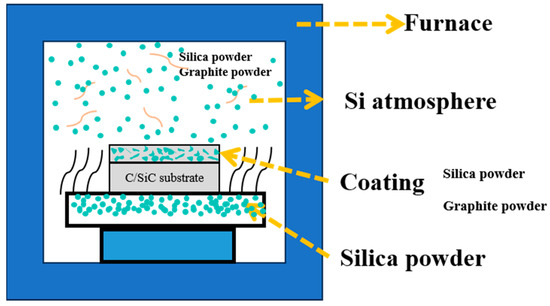
Figure 1
Open AccessArticle
Effect of the Pretreatment on the Properties of Cement-Based Recycled Powder
Coatings 2024, 14(1), 107; https://doi.org/10.3390/coatings14010107 - 13 Jan 2024
Abstract
Three pretreatment methods including calcination, carbonization, and a carbonization-calcination combined pretreatment were studied to understand the pretreatment mechanisms for cement-based recycled powder (CRP). The mineral and microstructure of the CRP sample were investigated through X-ray diffraction (XRD), Fourier-transform infrared spectroscopy (FTIR), thermal gravity
[...] Read more.
Three pretreatment methods including calcination, carbonization, and a carbonization-calcination combined pretreatment were studied to understand the pretreatment mechanisms for cement-based recycled powder (CRP). The mineral and microstructure of the CRP sample were investigated through X-ray diffraction (XRD), Fourier-transform infrared spectroscopy (FTIR), thermal gravity (TG) analysis, and scanning electron microscopy (SEM) after exposure to different thermal temperatures (400 °C, 600 °C, and 800 °C), carbonization times (6 h, 1 d, and 3 d), and pre-carbonization for 1 d followed by heating at 800 °C. The results showed that the optimal thermal pretreatment temperature was approximately 720–800 °C. Through the process of calcination, the C-S-H, Ca(OH)2, and CaCO3 minerals in the CRP sample underwent decomposition to produce CaO or C2S. During carbonation, the pretreatment not only results in the increased production of CaCO3 owing to the reaction of the C-S-H gel and Ca(OH)2 with CO2, but also enhances its properties and the strength of chemical bond between CaCO3 and the post-hydration products. Both CaCO3 and CaO were present after the combined pretreatment, which indicates that the CaCO3 mineral formed superior stability after it had been pre-carbonated. Due to fewer impurities in CRP, the positive effect of the pretreatment on CRP was significantly better than that on recycled powder derived from construction and demolition waste.
Full article
(This article belongs to the Special Issue Effective Coating Barriers for Protection of Reinforced Concrete)
►▼
Show Figures
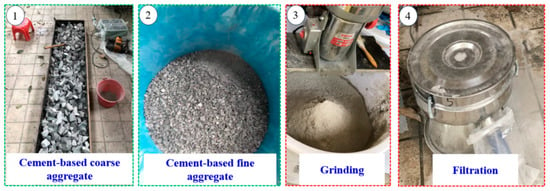
Figure 1
Open AccessArticle
Anticorrosion Protection of New Composite Coating for Cobalt-Based Alloy in Hydrochloric Acid Solution Obtained by Electrodeposition Methods
Coatings 2024, 14(1), 106; https://doi.org/10.3390/coatings14010106 - 12 Jan 2024
Abstract
In this work, electrochemical deposition techniques (galvanostatic and potentiostatic) were used to obtain coatings of a new composite polymer, 3-methylpyrrole—sodium dodecyl sulfate/poly 2-methythiophene (P3MPY-SDS/P2MT), on cobalt-based alloy samples for anti-corrosion safety. The use of sodium dodecyl sulfate as a dopant ion in electrosynthesis
[...] Read more.
In this work, electrochemical deposition techniques (galvanostatic and potentiostatic) were used to obtain coatings of a new composite polymer, 3-methylpyrrole—sodium dodecyl sulfate/poly 2-methythiophene (P3MPY-SDS/P2MT), on cobalt-based alloy samples for anti-corrosion safety. The use of sodium dodecyl sulfate as a dopant ion in electrosynthesis can have a relevant effect on the anticorrosive property of the composite polymer layer by blocking the entry of corrosive ions. The cobalt alloy specimen had an important impact on the electrochemical performance of the composite coating and this together with the presence of the polymeric layer was achieved by simultaneously constitution of a complex oxides film and polymeric layers. The polymeric coatings were analyzed using scanning electron microscopy (SEM), Fourier transform infrared (FT-IR) spectroscopy, and cyclic voltammetry (CV) methods. The corrosion protection of the P3MPY-SDS/P2MT-covered cobalt-based alloy was explored using electrochemical impedance spectroscopy (EIS) and potentiodynamic polarization procedures in a 1 M HCl solution. The corrosion speed of the P3MPY-SDS/P2MT-covered cobalt-based alloy was observed to be ~10 times less than an uncovered specimen, and the effectiveness of the composite layers of this coating is greater than 91%. This superior efficaciousness was obtained by the electropolymerization of P3MPY-SDS/P2MT at current densities of 1 mA/cm2 and 0.5 mA/cm2, applied potentials of 0.9 V and 1.0 V, and a molar ratio of 5:1. Corrosion test results indicate that the P3MPY-SDS/P2MT coatings provide a good result: protection against the corrosion of a cobalt-based alloy in aggressive solutions.
Full article
(This article belongs to the Special Issue New Developments of Protective Coatings, Organic Polymers, and Surface Analysis: 2nd Edition)
►▼
Show Figures
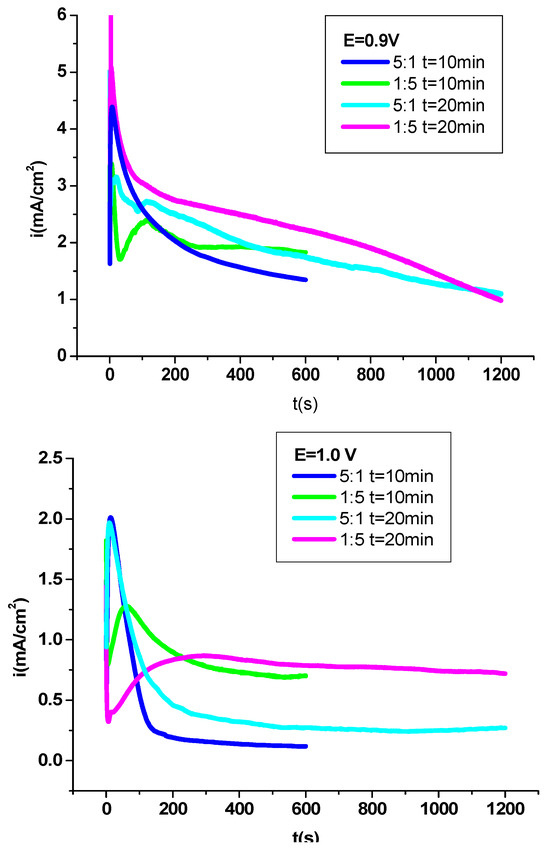
Figure 1
Open AccessArticle
Effect of Fine-Grained Particles and Sensitivity Analysis of Physical Indexes on Residual Strength of Granite Residual Soils
Coatings 2024, 14(1), 105; https://doi.org/10.3390/coatings14010105 (registering DOI) - 12 Jan 2024
Abstract
Recently, stability analyses of structures built of granite residual soils, for example, earth dams or other urban structures, particularly when under vibration, are being recognized as much more important than previously imagined. In such analyses, it is emphasized that the residual strength should
[...] Read more.
Recently, stability analyses of structures built of granite residual soils, for example, earth dams or other urban structures, particularly when under vibration, are being recognized as much more important than previously imagined. In such analyses, it is emphasized that the residual strength should be utilized considering the seismic effect. Therefore, the residual strength of granite residual soils must be evaluated accurately in order to reduce the damage to structures built on them. This paper presented a laboratory study designed to examine the effect of fine-grained particles (FGPs; particle size ≤ 0.075 mm) on residual strength by the multistage procedure of the Bromhead ring shear test and evaluate the physical indexes forecasting the residual strength of granite residual soils using soil samples composed of fifteen different percentages of FGPs artificially adjusted from a reservoir embankment soil sample. The results showed that the residual strength decreased along with the increase in FGPs and that the residual frictional angle was rarely dependent on the ratio of FGPs when the ratio was over 90%. Even in the residual state, a small amplitude of fluctuation in shear stress still existed and was affected by the coarse-grained particles (CGPs; particle size ≥ 0.075 mm), such as the quartz particles in the granite residual soils. It was also found that the amplitude of fluctuation was smaller when the FGP fraction was greater. In addition, under the same normal stress, the peak strength and residual strength decreased with an increase in the ratio of FGPs. Then, they remained almost the same when the ratios of FGPs were equal to 85% and 90%, respectively, and the post-peak attenuation tended to increase initially with an increase in the FGPs and then remained almost the same. Moreover, based on the sensitivity analysis, the order of influence of physical indexes on the residual frictional angle was also ranked for the granite residual soils.
Full article
(This article belongs to the Topic Materials and Surface Treatment Processes Used for Engineering Applications)
►▼
Show Figures
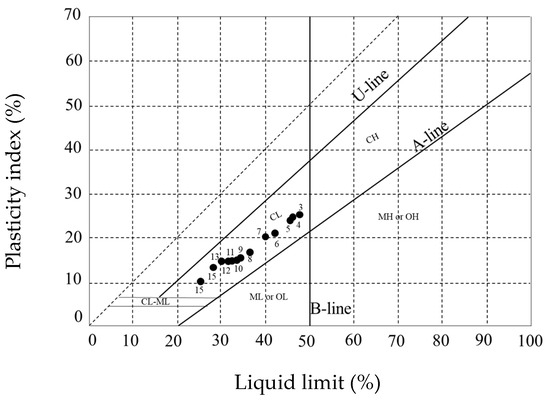
Figure 1
Open AccessArticle
Study on Microstructure and Properties of Additive-Manufactured TC4ELI+TC21 Titanium Alloy Gradient Composite Structures
Coatings 2024, 14(1), 104; https://doi.org/10.3390/coatings14010104 - 12 Jan 2024
Abstract
TC4ELI+TC21 titanium gradient composite structures with direct transition (TD1) and cross transition (TD2) were prepared using laser deposition manufacturing technology. The microstructure of the gradient interface was observed, and the distribution of alloying elements was detected. The tensile properties of the two alloys
[...] Read more.
TC4ELI+TC21 titanium gradient composite structures with direct transition (TD1) and cross transition (TD2) were prepared using laser deposition manufacturing technology. The microstructure of the gradient interface was observed, and the distribution of alloying elements was detected. The tensile properties of the two alloys at room temperature were tested, and the effects of different heat treatment regimens on the microstructure and mechanical properties were investigated. The results show that there is no obvious defect at the gradient interface of the two alloys. Compared with direct transition alloys, the alloying elements of TD2 alloys change less at the interface, the structure of the transition zone is more closely bound, and the elongation is higher. After heat treatment, the α phase in the alloy is coarsened, and the alloy elements at the interface are fully diffused, so that the gradient interface of the alloy is eliminated to a certain extent, the tensile strength of the alloy decreases, and elongation increases. The strength and plasticity of the alloy reached their best match at a solution temperature of 930 °C.
Full article
(This article belongs to the Section Laser Coatings)
►▼
Show Figures
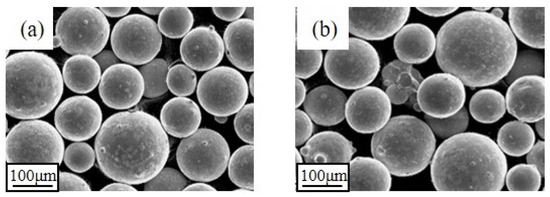
Figure 1
Open AccessArticle
Enhancement of the Surface Hydrophilicity of Poly(Vinyl Chloride) Using Hyperbranched Polylysine with Polydopamine
Coatings 2024, 14(1), 103; https://doi.org/10.3390/coatings14010103 - 12 Jan 2024
Abstract
In recent years, the application of polyvinyl chloride (PVC) material has significantly expanded within the realm of biomedical materials. However, the hydrophobicity of PVC has been found to cause many adverse reactions in patients within the biomedical field. It is imperative to urgently
[...] Read more.
In recent years, the application of polyvinyl chloride (PVC) material has significantly expanded within the realm of biomedical materials. However, the hydrophobicity of PVC has been found to cause many adverse reactions in patients within the biomedical field. It is imperative to urgently discover viable approaches for enhancing the hydrophilicity of PVC in order to ensure its safety in biomedical applications. In this study, the surface of PVC films was modified with a combination of hyperbranched polylysine (HBPL) and polydopamine (pDA) through either simultaneous deposition with polydopamine (PVC-pDA/HBPL) or successive deposition of pDA and HBPL (PVC-pDA-HBPL), aiming to investigate the influence of this modification method on surface hydrophilicity enhancement. The surface coatings were characterized using gravimetry, scanning electron microscopy (SEM), Fourier transform infrared spectroscopy (FTIR), Raman spectroscopy, and water contact angle measurements. The results demonstrated that the incorporation of HBPL led to a significant enhancement in both the deposition amount and stability of pDA, particularly when the mass ratio of DA/HBPL was approximately 1:1. Simultaneously, the morphology of the films exhibited an increase in roughness, while surface hydrophilicity was significantly enhanced upon incorporating pDA and HBPL, and the water contact angle was decreased to 43.2°. Moreover, the detachment of PVC-pDA/HBPL and PVC-pDA-HBPL after exposure to 1.0 M NaOH solutions was considerably lower compared to that of PVC-pDA alone, indicating improved stability under strongly basic conditions. Notably, these enhancements were more pronounced for PVC-pDA/HBPL than for PVC-pDA-HBPL, indicating that HBPL may act as a cross-linker during pDA deposition primarily through intermolecular Schiff base reactions, hydrogen bonding, or Michael addition. This work represents a pioneering effort in integrating HBPL and dopamine for hydrophilic modification of PVC materials, thereby expanding the potential applications of PVC materials. Additionally, we provide novel insights into constructing a hydrophilic surface based on bionic principles and expanding the potential applications of HBPL and pDA.
Full article
(This article belongs to the Special Issue Advanced Polymer and Thin Film for Sustainable Energy Harvesting)
►▼
Show Figures
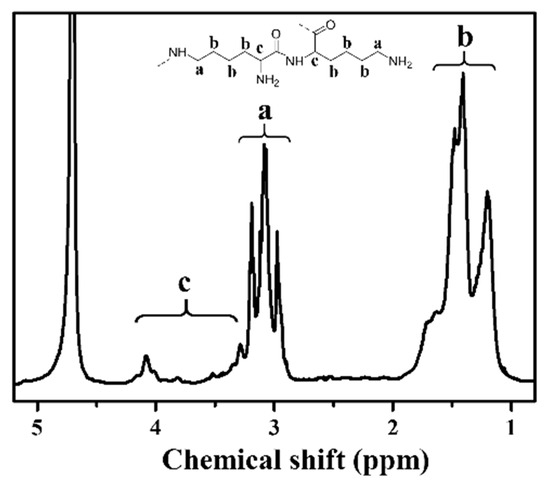
Figure 1
Open AccessArticle
High-Temperature Oxidation Resistance and Molten Salt Corrosion Study of YSZ, CeYSZ, and YSZ/CeYSZ Thermal Barrier Coatings by Atmospheric Plasma Spraying
Coatings 2024, 14(1), 102; https://doi.org/10.3390/coatings14010102 - 12 Jan 2024
Abstract
►▼
Show Figures
Five thermal barrier coatings (TBCs), namely TBC-1 (YSZ), TBC-2 (CeYSZ), TBC-3 (YSZ:CeYSZ = 1:2), TBC-4 (YSZ:CeYSZ = 1:1), and TBC-5 (YSZ:CeYSZ = 2:1), were fabricated using the atmospheric plasma spraying (APS) method. Their oxidation behaviors at 1100 °C and corrosion resistance to molten
[...] Read more.
Five thermal barrier coatings (TBCs), namely TBC-1 (YSZ), TBC-2 (CeYSZ), TBC-3 (YSZ:CeYSZ = 1:2), TBC-4 (YSZ:CeYSZ = 1:1), and TBC-5 (YSZ:CeYSZ = 2:1), were fabricated using the atmospheric plasma spraying (APS) method. Their oxidation behaviors at 1100 °C and corrosion resistance to molten salts (V2O5 + Na2SO4) at 900 °C were examined. After 100 h of oxidation, the thermally grown oxide layer (TGO) for YSZ primarily contained Cr and Ni oxides with significant internal fractures, presenting a continuous band-like Al2O3. In dual-ceramic configurations, an increase in CeYSZ thickness led to a rise in Al content and reduced Cr and Ni in TGO, with the surface fracture morphing into an internal porosity. Following salt corrosion, YSZ revealed rod-like YVO4 and m-ZrO2 as corrosion products, whereas CeYSZ displayed chain-structured CeO2, CeYO4, and YVO4 combined with m-ZrO2. YSZ coatings underwent notable phase transitions with evident densification, forming a corrosion layer of approximately 10 μm. Conversely, CeYSZ showed a limited phase change, retaining porosity without a distinguishable corrosion layer. As CeYSZ thickness increased from 100 μm to 200 μm in the dual-ceramic structure, salt penetration reduced. Evidently, the dense structure of CeYSZ heightened diffusion resistance against oxygen and corrosive salts, rendering superior oxidation and corrosion resistance over YSZ. By optimizing the thickness ratio between CeYSZ and YSZ, whilst retaining total ceramic layer thickness, the dual-ceramic TBC’s resistance to high-temperature oxidation and corrosion can be enhanced.
Full article
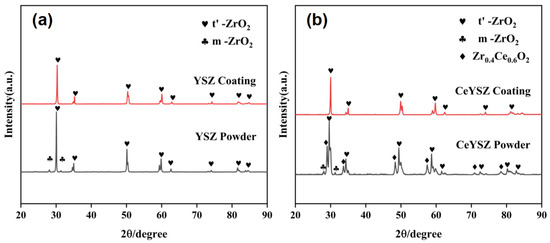
Figure 1
Open AccessArticle
Monitoring Aging Effects in Graphite Bisulfates by Means of Raman Spectroscopy
Coatings 2024, 14(1), 101; https://doi.org/10.3390/coatings14010101 - 12 Jan 2024
Abstract
Graphite bisulfate (GBS) compounds consist of graphite layers intercalated by HSO
Graphite bisulfate (GBS) compounds consist of graphite layers intercalated by HSO
(This article belongs to the Special Issue Advanced Functional Nanostructured Films and Coatings for Energy Applications)
►▼
Show Figures
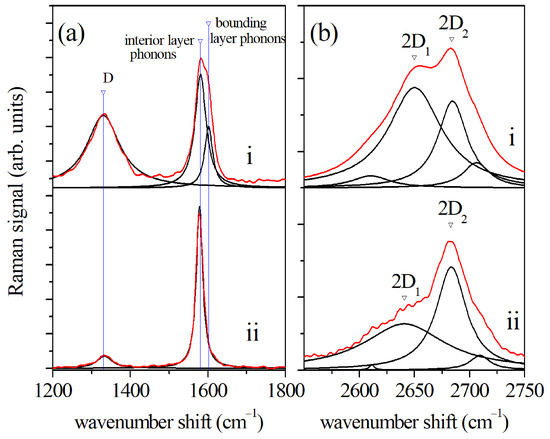
Figure 1
Open AccessArticle
Preliminary Study on Microbial Deterioration Control and Effectiveness Evaluation in the Neolithic Prehistoric Archaeological Site of Dadiwan, Northwest China
Coatings 2024, 14(1), 100; https://doi.org/10.3390/coatings14010100 - 11 Jan 2024
Abstract
Microbial deterioration as one of the widespread problems in archaeological site museums significantly affects their safety and exhibits. This paper systemically investigated the environments and conditions of microbial outbreaks in the Dadiwan No. F901 site museum, which is a representative archaeological site of
[...] Read more.
Microbial deterioration as one of the widespread problems in archaeological site museums significantly affects their safety and exhibits. This paper systemically investigated the environments and conditions of microbial outbreaks in the Dadiwan No. F901 site museum, which is a representative archaeological site of prehistoric Yangshao culture. The morphology and harmful characteristics of the outbreak microorganisms were analyzed by microscopic techniques. The ultraviolet resistance of harmful microorganisms was also studied. Combining these findings with the original facilities of the site museum, a scientific and reasonable project was proposed to control and prevent the activity of harmful microorganisms. In addition, a 1% OIT/DCOIT biocide concentration was applied to inhibit microorganism-caused deterioration, in combination with mechanical removal based on laboratory tests and screening in situ. The effectiveness of microbial control was assessed using a portable microscope, ATP bioluminescence assay, and color difference detection. As a long-lasting preventive measure for microbial deterioration, an ultraviolet sterilization system can efficaciously prevent the re-outbreak of microbial deterioration to form a relatively stable dynamic balance for the surroundings of the site. This study is a resultful exploration in terms of microbial control and plays an important role in the sustainable protection of archaeological site museums.
Full article
(This article belongs to the Special Issue Biological Colonization of Cultural Heritage. Emerging Trends in the Protection of Cultural Properties—Novel Control Strategies and Preventive Approaches)
►▼
Show Figures

Figure 1
Open AccessReview
Coatings and Surface Modification of Alloys for Tribo-Corrosion Applications
by
and
Coatings 2024, 14(1), 99; https://doi.org/10.3390/coatings14010099 - 11 Jan 2024
Abstract
This review of the tribocorrosion of coatings and surface modifications covers nearly 195 papers and reviews that have been published in the past 15 years, as compared to only 37 works published up to 2007, which were the subject of a previous review
[...] Read more.
This review of the tribocorrosion of coatings and surface modifications covers nearly 195 papers and reviews that have been published in the past 15 years, as compared to only 37 works published up to 2007, which were the subject of a previous review published in 2007. It shows that the research into the subject area is vibrant and growing, to cover emerging deposition, surface modification and testing techniques as well as environmental influences and modelling developments. This growth reflects the need for machines to operate in harsh environments coupled with requirements for increased service life, lower running costs and improved safety factors. Research has also reacted to the need for multifunctional coating surfaces as well as functionally graded systems with regard to depth. The review covers a range of coating types designed for a wide range of potential applications. The emerging technologies are seen to be molten-, solution-, PVD- and PEO-based coatings, with CVD coatings being a less popular solution. There is a growing research interest in duplex surface engineering and coating systems. Surface performance shows a strong playoff between wear, friction and corrosion rates, often with antagonistic relationships and complicated interactions between multiple mechanisms at different scale lengths within tribocorrosion contacts. The tribologically induced stresses are seen to drive damage propagation and accelerate corrosion either within the coating or at the coating coating–substrate interface. This places a focus on coating defect density. The environment (such as pH, DO2, CO2, salinity and temperature) is also shown to have a strong influence on tribocorrosion performance. Coating and surface modification solutions being developed for tribocorrosion applications include a whole range of electrodeposited coatings, hard and tough coatings and high-impedance coatings such as doped diamond-like carbon. Hybrid and multilayered coatings are also being used to control damage penetration into the coating (to increase toughness) and to manage stresses. A particular focus involves the combination of various treatment techniques. The review also shows the importance of the microstructure, the active phases that are dissolved and the critical role of surface films and their composition (oxide or passive) in tribocorrosion performance which, although discovered for bulk materials, is equally applicable to coating performance. New techniques show methods for revealing the response of surfaces to tribocorrosion (i.e., scanning electrochemical microscopy). Modelling tribocorrosion has yet to embrace the full range of coatings and the fact that some coatings/environments result in reduced wear and thus are antagonistic rather than synergistic. The actual synergistic/antagonistic mechanisms are not well understood, making them difficult to model.
Full article
(This article belongs to the Special Issue Role of Coatings on Corrosion, Wear and Erosion Behavior)
►▼
Show Figures
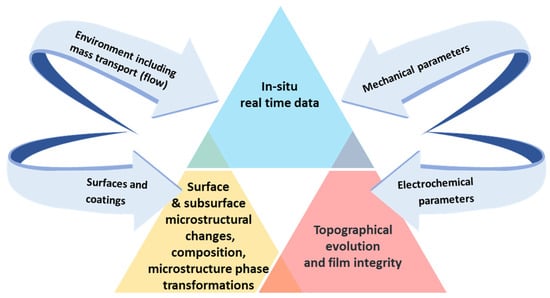
Figure 1
Open AccessArticle
A Comparison of 90° Bending for Foldable Electronics
Coatings 2024, 14(1), 98; https://doi.org/10.3390/coatings14010098 - 11 Jan 2024
Abstract
In order to assess the longevity of foldable electronics, folding or bending tests on model systems need to be performed. However, not all bending tests are created equal in that different configurations lead to different amounts of mechanical damage and thus different electrical
[...] Read more.
In order to assess the longevity of foldable electronics, folding or bending tests on model systems need to be performed. However, not all bending tests are created equal in that different configurations lead to different amounts of mechanical damage and thus different electrical responses. Two 90° bending instruments were compared using two model metallic thin film systems on polyimide to establish if the two seemingly similar bending tests yield the same results. The two film systems, namely 300 nm Mo and 130 nm Al on 50 nm Mo, were magnetron-sputtered on polyimide substrates and tested in the custom-built FLEX-E-TEST and the commercially available YUASA test that is capable of in situ resistance measurements. For statistics, 10–12 samples were tested of each film system on each folding device using the same applied bending strain and number of cycles. Samples were intermittently characterized with confocal laser scanning microscopy and electrical resistance to correlate the amount of mechanical damage (crack density) with the electrical normalized resistance ratio of the damaged area. The results show that even with the same bending radius, a similar but not identical amount of mechanical damage forms for both bending devices. Additionally, the resistance as a function of cycles also differs after 10,000 cycles. A closer examination of the damage, especially in the Al/Mo film system, indicates that the speed of the bending, and if the samples experience spring back, can alter the received mechanical damage. The in situ resistance data of the YUASA test were further examined and a suggestion of standardizing how folding or bending test results are reported is provided.
Full article
(This article belongs to the Special Issue Recent Advances in Metallic Thin Films and Current Applications)
►▼
Show Figures
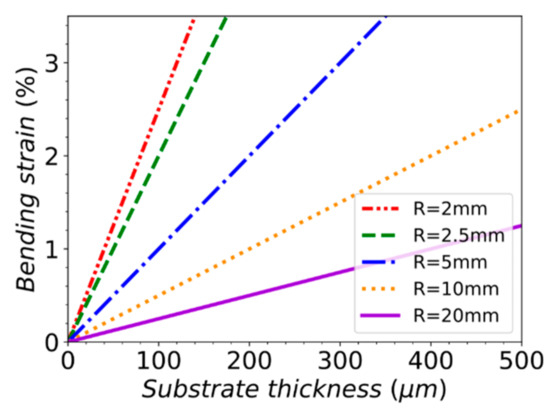
Figure 1
Open AccessArticle
Strontium-Doped Mesoporous Bioactive Glass-Loading Bisphosphonates Inhibit Osteoclast Differentiation and Prevent Osteoporosis in Ovariectomized Mice
Coatings 2024, 14(1), 97; https://doi.org/10.3390/coatings14010097 - 11 Jan 2024
Abstract
Postmenopausal osteoporosis, a metabolic bone disease associated with aging that affects bones throughout the body, is emerging as an urgent public health concern and imposes a substantial healthcare burden on society. The clinical application of bisphosphonate, the primary treatment for osteoporosis, is limited
[...] Read more.
Postmenopausal osteoporosis, a metabolic bone disease associated with aging that affects bones throughout the body, is emerging as an urgent public health concern and imposes a substantial healthcare burden on society. The clinical application of bisphosphonate, the primary treatment for osteoporosis, is limited owing to the drug’s severe complications. Herein, we investigate the synthesis and utilization of strontium-doped mesoporous bioactive glass loaded with alendronate (ALN@Sr-MBG) as a novel therapeutic agent for osteoporosis, to explore its potential as an alternative to alendronate (ALN). Strontium-doped mesoporous bioactive glass (Sr-MBG) was synthesized using the sol–gel method, while ALN@Sr-MBG was obtained via incorporating Sr-MBG into an alendronate saturated solution. The bioactivities of ALN@Sr-MBG, including biotoxicity, inflammation inhibition, and anti-osteoclast differentiation, were investigated in vitro using CCK-8, flow cytometry, tartrate-resistant acid phosphatase (TRAP) staining, and RT-PCR assays. Animal models were established by surgically removing the ovaries from non-pregnant female C57/BL mice, followed by weekly intraperitoneal injections of ALN@Sr-MBG, ALN, or excipients. After 8 weeks, the mice femurs were extracted and analyzed through micro-CT scanning and hematoxylin-eosi, osteoblastic, and osteogenic staining. These in vitro findings demonstrate that ALN@Sr-MBG displays enhanced biological efficacy compared to ALN in terms of inflammation inhibition, osteogenesis promotion, and osteoclastogenesis inhibition. Furthermore, micro-CT analysis revealed that ALN@Sr-MBG significantly augments bone mineral density (BMD), bone volume fraction (BV/TV), trabecular number (Tb.N), and trabecular thickness (Tb.Th), while reducing trabecular separation (Tb.Sp) and the structural model index (SMI) in mice with ovariectomy-induced osteoporosis. The osteoblast and osteogenic staining results indicate the enhanced bioactivities of ALN@Sr-MBG in promoting bone formation and inhibiting bone resorption compared to ALN. In vitro and in vivo assessments further confirmed that ALN@Sr-MBG exhibits superior anti-osteoporotic bioactivity compared to ALN. This study’s findings confirm the potential of ALN@Sr-MBG as a novel alternative therapy to ALN and a drug candidate for the treatment of osteoporosis.
Full article
(This article belongs to the Special Issue Application of Coatings on Implants Surfaces)
►▼
Show Figures
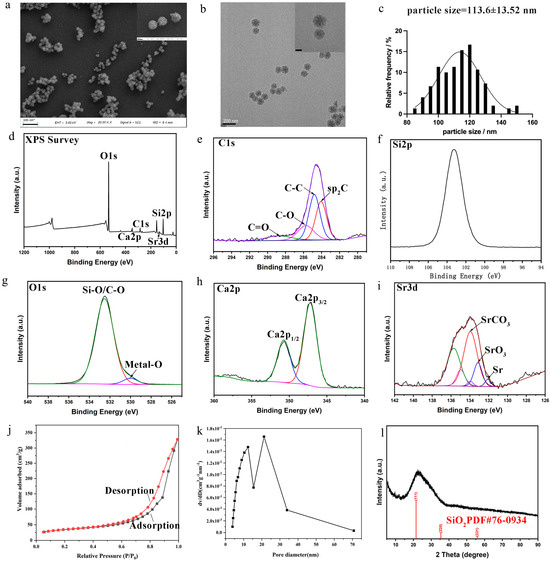
Figure 1

Journal Menu
► ▼ Journal Menu-
- Coatings Home
- Aims & Scope
- Editorial Board
- Reviewer Board
- Topical Advisory Panel
- Instructions for Authors
- Special Issues
- Topics
- Sections & Collections
- Article Processing Charge
- Indexing & Archiving
- Editor’s Choice Articles
- Most Cited & Viewed
- Journal Statistics
- Journal History
- Journal Awards
- Society Collaborations
- Conferences
- Editorial Office
Journal Browser
► ▼ Journal BrowserHighly Accessed Articles
Latest Books
E-Mail Alert
News
Topics
Topic in
Beverages, Coatings, Foods, Molecules, Polymers
Edible Films and Coatings Based on Functionalized Molecules Extracted from Food Industry By-Products
Topic Editors: Valeria Rizzo, Stefano Farris, Teodora Emilia Coldea, Lluís PalouDeadline: 31 January 2024
Topic in
Catalysts, Coatings, Crystals, Nanomaterials, Surfaces
Surface and Interface Engineering in Catalytic and Optoelectronic Applications
Topic Editors: Wei-Chun Chen, Shou-Yi Kuo, Cheng-Ying Chen, Li-Syuan Lu, Kun-An Chiu, Che-Chin ChenDeadline: 10 March 2024
Topic in
Coatings, JMMP, Materials, Metals, Micromachines
Additive Manufacturing of Architected Metallic Materials
Topic Editors: Mohammad J. Mirzaali, Amir A. ZadpoorDeadline: 31 March 2024
Topic in
Coatings, JMMP, Materials, Metals, Processes
Alloys and Composites Corrosion and Mechanical Properties
Topic Editors: Jingxiang Xu, Zhenhua Chu, Xingwei ZhengDeadline: 15 April 2024

Conferences
Special Issues
Special Issue in
Coatings
New Trends in Functional Materials and Devices
Guest Editors: Felicia Iacomi, Mirela Suchea, Emmanouel KoudoumasDeadline: 20 January 2024
Special Issue in
Coatings
Bio-Based and Bio-Inspired Polymers and Composites
Guest Editors: Rafael L. Quirino, Thomas GarrisonDeadline: 31 January 2024
Special Issue in
Coatings
Semiconductor Thin Films: Fabrication, Properties and Applications
Guest Editor: Rene A. Castro ArataDeadline: 10 February 2024
Special Issue in
Coatings
Printed Functional Thin Films for Electronic, Optoelectronic and Sensing Applications
Guest Editors: Fausta Loffredo, Fulvia VillaniDeadline: 28 February 2024
Topical Collections
Topical Collection in
Coatings
Feature Paper Collection in Plasma Coatings, Surfaces & Interfaces
Collection Editors: Qi Hua Fan, Bocong Zheng
Topical Collection in
Coatings
Surface and Interface Science and Engineering for the Society of the Future
Collection Editor: Alessandro Lavacchi
Topical Collection in
Coatings
Feature Paper Collection in 'Surface Coatings for Biomedicine and Bioengineering'
Collection Editor: Anton Ficai
Topical Collection in
Coatings
Feature Paper Collection (5) of Topic Editors
Collection Editor: Petrica Vizureanu




